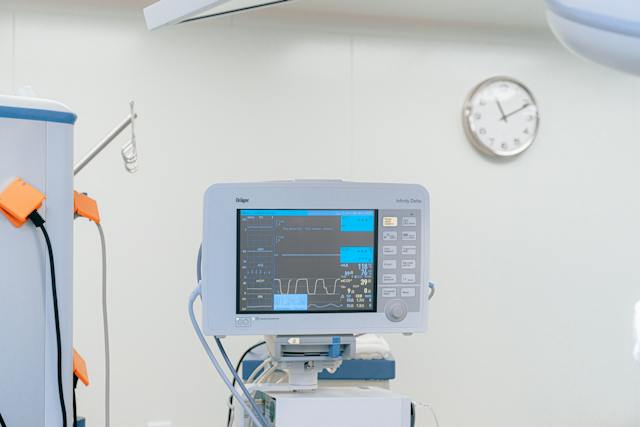The EU recently released a new batch of medical device regulations, complicating existing processes for manufacturers.
The European Union (EU) has always been at the forefront of regulating sensitive devices. Its latest batch of regulations covering medical devices has several implications for manufacturers and the medical device market.
MDR (medical device regulations) replace older frameworks governing the manufacture and tracking of medical and implantable devices. As these devices have grown more complex, so have the regulations surrounding them.
Here’s how a medical device manufacturer can prepare for the latest wave of EU MDR legislation.
Assess existing compliance
The current batch of laws introduce several changes and medical device manufacturers must identify deficiencies and plan to plug those gaps. One of the most critical changes involves manufacturer responsibility during post-market surveillance.
Per the EU MDR, manufacturers are now responsible for establishing a post-market surveillance system proactively. This surveillance must capture and analyze device performance in real-world conditions and feed data back for risk reassessments and clinical evaluations.
The objective here is to make sure devices are always safe and to study how their behavior changes over their lifecycle. Most manufacturers are currently unprepared to monitor lifecycle changes in this context. Beyond a few rudimentary checks, most manufacturers rely on the market for feedback.
This situation has changed and is a good example of a gap most manufacturers must plug.
Evaluate resources
Securing gaps in current devices is expensive. Firms must initiate cost analysis projects to make sure they have enough resources to cover improvements and launch new processes.
The previous point about post-market surveillance is once again apt. Initiating a larger data-gathering program is resource-intensive and will need additional technical infrastructure. That infrastructure will need maintenance by qualified personnel.
All of these cost money. Medical device manufacturers must analyze their cash flow and plan for the future as quickly as possible. A lot of investment will likely go toward upgrading existing infrastructure.
For instance, the new directives call for more integration between quality management systems and downstream processes like surveillance and clinical evaluation. Right now, these integrations are weak, to say the least, with only the largest manufacturers possessing such capabilities.
Update documentation
With additional infrastructure comes the need to update documents and technical specifications. EU MDR laws now require documentation and labeling in line with the new directives.
Devices must now have more detailed labels, outlining device usage, risks, and clinical evidence.
Each device must also have a unique device identifier (UDI.) The UDI must be present on all device labels since this enhances its traceability throughout its lifecycle.
Manufacturers now have to offer consumers more information than ever and need to begin shifting their processes right now to avoid falling foul of new legislation.
Develop new processes
The EU MDR introduces new processes that manufacturers may have no ability to currently service. For instance, implementing data capture and relay systems is a step too far for current manufacturers.
The changes go beyond mere data capture. Manufacturers must now process that data and feed it back for further clinical assessment. Those assessments must feed into product updates and delivery schedules.
In short, the new MDR laws need new processes that most medical device manufacturers haven’t considered. Starting as quickly as possible is the best way forward to ensure full compliance.
Build relationships with notified authorities
The new EU MDR rules specify that every manufacturer must engage with a notified body to ensure they conform with regulations. As every device manufacturer knows, building relationships within these bodies is critical to avoiding approvals stuck in red tape.
These regulatory bodies will evaluate and assess the manufacturer’s processes before approving their devices for wider market release. These assessments are set to take time and consume plenty of manufacturer resources.
The best way for manufacturers to avoid this situation is to work closely with the body, understand what they’re looking for, and modify their workflows accordingly. Hiring people who have experience working with these bodies is also a good idea.
The right professional can smooth any conversations with the authorities, easing the manufacturer’s entry into the market.
Train employees
EU MDR represents a huge shift in the medical device market. As a result, manufacturers who install new processes must also train their employees to think according to the new rules. Fail to do this and compliance becomes highly challenging.
Manufacturers must break down the new rules so that employees can understand how it affects their jobs. Training programs are best delivered in an environment that simulates real-world scenarios. Instead of delivering never-ending seminars that simply list the new rules, companies must translate the impact of those rules.
For instance, how will post-market surveillance change clinical research roles? How will those professionals have to handle the influx of new data? Answering these questions is essential to ensuring employees remain engaged and in line with new rules.
Constant change
The medical device market routinely experiences change. Forward-thinking manufacturers always position themselves ahead of the curve by working closely with regulators and ensuring their employees are up to speed on new rules.
The EU MDR is no different. While policies will change, medical device manufacturers that align themselves with change tend to prosper.







 WebProNews is an iEntry Publication
WebProNews is an iEntry Publication